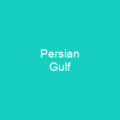What Exactly Is a Gulf?
A gulf is like a giant’s bathtub carved into the land, with its waters stretching out to meet the vast ocean. Imagine a large inlet from an ocean, but not just any inlet—it’s more like a narrow gateway that opens up into a wide expanse of salt water enclosed by coastline. This natural feature has been a crucial part of human history and geography for centuries.
Defining the Gulf
A gulf, in its essence, is a large inlet from an ocean that typically has a narrower opening than a bay. It’s like a river that flows into the sea but with a twist: it’s wide enough to be considered a body of water on its own, yet narrow enough to create a distinct boundary between land and sea.
Comparing Gulfs and Bays
Now, let’s compare gulfs with bays. A bay is like an open embrace, where the ocean flows in more freely, creating a broader and deeper body of water. In contrast, a gulf is more like a narrow passage that opens up into a vast sea, making it a unique feature on the map.
The Role of Gulfs in Navigation
Many gulfs are major shipping areas, acting as vital gateways for trade and commerce. They serve as natural harbors, providing safe anchorage for ships and facilitating international trade. Think of them as the veins of a global economy, pumping life into coastal cities and regions.
Historical Significance
Throughout history, gulfs have played a pivotal role in shaping human civilization. They’ve been the birthplaces of empires, the routes for explorers, and the lifelines for trade. The Gulf of Mexico, for instance, has been a crucial link between North America and the rest of the world, while the Persian Gulf has been at the heart of Middle Eastern commerce.
Environmental Impact
Beyond their economic importance, gulfs are also significant from an environmental perspective. They support diverse ecosystems, acting as nurseries for marine life and providing habitats for countless species. The health of these gulfs is crucial not only to the local communities but to the global ecosystem as well.
Conclusion
A gulf is more than just a geographical feature; it’s a gateway, a highway, and a heartland all rolled into one. These natural inlets have shaped our world in countless ways, from trade routes to cultural exchanges. So, the next time you hear about a gulf, remember its profound impact on human history and the delicate balance of nature.

You want to know more about Gulf?
This page is based on the article Gulf published in Wikipedia (retrieved on February 11, 2025) and was automatically summarized using artificial intelligence.





